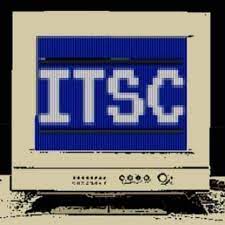Healthcare providers in the U.S. are taking steps toward a more comprehensive approach to care delivery that helps patients throughout a continuum of care.
Ideally, caregivers can get a clearer picture into someone’s readmission journey, for instance, with the help of accessible, relevant data. That way, care is not siloed within the hospital but connected across primary care, pharmacies, specialties, behavioral health and more, even including nontraditional services that impact health such as help with food access and housing.
To improve the sharing of health information and bring it into the modern era, many national and state-level initiatives have developed over the years, from California’s Data Exchange Framework (DxF) to the federal Trusted Exchange Framework and Common Agreement.
During a session at the 2025 LeadingAge Annual Meeting in Boston, industry leaders discussed the importance of data sharing in the care of older adults, especially when 93% of adults 65 and older have at least one chronic condition, and 79% have two or more conditions, according to recent research.
Click the banner to learn how tech eases operational challenges and improves resident experiences.
Keith Kasin, COO at Hillcrest, a continuing care retirement community (CCRC) based in La Verne, Calif., said his organization has benefited from participating in the state’s DxF by expanding what caregivers can understand about a resident to improve care plans.
With the DxF, his team can learn more about a resident beyond the 72-hour snapshot of their hospital stay that a single electronic health record may offer. “It changes the whole concept of that discharge plan, because as administrators and operators, we want to make sure that they don’t go back to the hospital again,” he said.
Rachel Goldberg, senior consultant at Intrepid Ascent, offered a few examples of how a data exchange benefits organizations across the care continuum. Let’s say a patient is discharged from a skilled nursing facility that is connected to a health information organization; if that patient returns to an emergency department (that is also connected to an HIO), the ED can send an alert to the SNF that the patient has been readmitted. If that patient gets readmitted multiple times within a span of a few days, that could signal to caregivers that something else needs to be addressed. In this case, help from a community-based organization may be more appropriate, and that coordination can happen thanks to data sharing.
Another way it can help organizations is through preplacement activity: Staff members at a participating CCRC can leverage data sharing to understand a resident’s needs so that they’re not stuck making calls or chasing down information that is readily available to them.
Interoperability and gaps in data quality and standardization remain top concerns for senior care organizations, according to Argentum’s 2025 technology report. Only 26% of organizations say they have a “clear and shared understanding of how to define and measure health and wellness outcomes.” And 77% say they find interoperability between software tools and access to data sets a primary issue with new tech adoption.
As many senior care organizations adopt EHRs, Kasin notes, there’s an opportunity to streamline processes. “There’s so much potential in the data that’s here if we could create the linkages from PointClickCare, or Matrix, or any EHR that’s out there,” he said.
Keep this page bookmarked for our coverage of the 2025 LeadingAge Annual Meeting and Expo. Follow us on X at @HealthTechMag and join the conversation at #LeadingAge25.
The post LeadingAge 2025: Improving the Flow of Data in Senior Care first appeared on TechToday.
This post originally appeared on TechToday.
